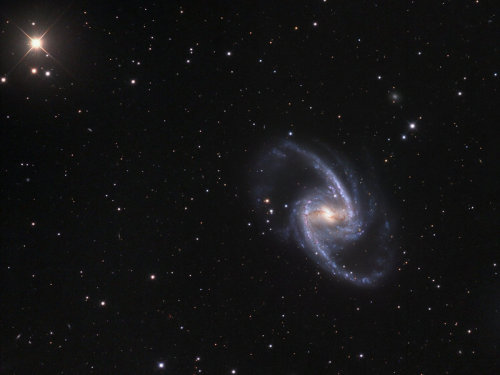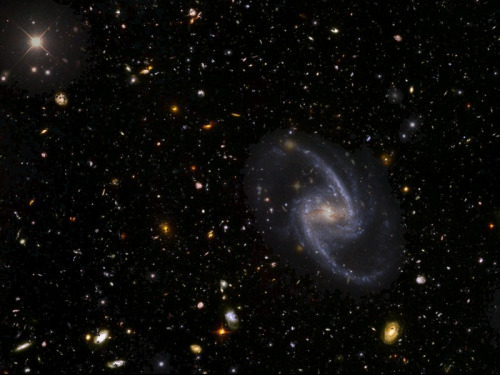Chris-z-2135-46-blog - Space Travel

More Posts from Chris-z-2135-46-blog and Others

One of 7 ways a trip to Mars could kill you
1) Your rocket could blow up before leaving Earth
Elon Musk’s plan to go to Mars involves strapping a giant spaceship atop the biggest rocket that humanity has ever built. Because any rocket launch basically involves a long, controlled explosion, it’s inherently precarious — no matter how many safety tests are done beforehand. If anything goes wrong, if the explosion gets out of control, the people strapped to that big container of fuel don’t stand a chance.
For context, NASA’s space shuttle program carried 833 passengers between 1981 and 2011. Of those, 14 people died in explosions on two high-profile accidents (Challenger and Columbia), a fatality rate of 1.6 percent. That’s vastly more dangerous than driving and a bit riskier than climbing Mount Everest. (The fatality rate for the Apollo program to the moon was even higher, at 9 percent.)
But, of course, SpaceX would be using newer, more complex, and yet-untested rockets to get to Mars. So it’s tough to say what the actual odds of death would be. Possibly much higher! Note that a couple of SpaceX’s smaller Falcon 9 rockets have either exploded on the launchpad or blown up mid-flight. Engineers and rocket scientists can improve that, but it’s unlikely that the risk will be zero.








Terraforming Mars
When the bass drops
Gimme fuel
Asteroid Terms: Explained
There are interesting asteroid characters in our solar system, including an asteroid that has its own moon and even one that is shaped like a dog bone! Our OSIRIS-REx mission launches at 7:05 p.m. EDT today and will travel to asteroid Bennu.

Scientists chose Bennu as the target of the OSIRIS-REx mission because of its composition, size and proximity to Earth. Bennu is a rare B-type asteroid (primitive and carbon-rich), which is expected to have organic compounds and water-bearing minerals like clays.
Our OSIRIS-REx mission will travel to Bennu and bring a small sample back to Earth for study.

When talking about asteroids, there are some terms scientists use that might not be in your typical vocabulary…but we’ll help with that!
Here are a few terms you should know:
Orbital Eccentricity: This number describes the shape of an asteroid’s orbit by how elliptical it is. For asteroids in orbit around the sun, eccentricity is a number between 0 and 1, with 0 being a perfectly circular orbit and 0.99 being a highly elliptical orbit.
Inclination: The angle, in degrees, of how tilted an asteroid’s orbit is compared to another plane of reference, usually the plane of the Earth’s orbit around the sun.
Orbital Period: The number of days it takes for an asteroid to revolve once around the sun. For example, the Earth’s orbital period is 365 days.
Perihelion Distance: The distance between an asteroid and the sun when the asteroid is closest to the sun.
Aphelion Distance: The distance between the asteroid and the sun when the asteroid is farthest away from the sun.
Astronomical unit: A distance unit commonly used to describe orbits of objects around the sun. The distance from the Earth to the sun is one astronomical unit, or 1 AU, equivalent to about 93 million miles or 150 million kilometers.
Diameter: A measure of the size of an asteroid. It is the length of a line from a point on the surface, through the center of the asteroid, extending out to the opposite surface. Irregularly shaped asteroids may have different diameters depending on which direction they are measured.
Rotation Period: The time it takes for an asteroid to complete one revolution around its axis of rotation. For example, the rotation period of the Earth is approximately 24 hours, or 1 day.
Spectral Type: The classification of an asteroid, based on a measurement of the light reflected by the asteroid.

Watch live launch coverage of OSIRIS-REx to asteroid Bennu starting at 5:30 p.m, on NASA TV: http://www.nasa.gov/nasatv
Make sure to follow us on Tumblr for your regular dose of space: http://nasa.tumblr.com




Trillions and Trillions
As far as astronomers know, this universe of ours is nearly 14 billion years old and 93 billion light-years across. Only objects between 10 to 12 billion light-years distant will ever be visible due to the expansion of the universe.
Recently, a new survey upped the believed galactic population from around 100 billion to TWO TRILLION.
Images: Left: NGC 1365 Credit: Jason Jennings Right: Hubble Deep Field added to the background of NGC 1365 Credit: NASA/ESA
I would like to die on Mars. Just not on impact.
Elon Musk

Apollo’s Wardrobe - Houston, Texas - 1978
via reddit

-
 greenreblooming liked this · 8 years ago
greenreblooming liked this · 8 years ago -
 theblacktom reblogged this · 8 years ago
theblacktom reblogged this · 8 years ago -
 normhalm2ptoh reblogged this · 8 years ago
normhalm2ptoh reblogged this · 8 years ago -
 sidewalkscienceguy liked this · 8 years ago
sidewalkscienceguy liked this · 8 years ago -
 colonizemars reblogged this · 8 years ago
colonizemars reblogged this · 8 years ago -
 chris-z-2135-46-blog reblogged this · 8 years ago
chris-z-2135-46-blog reblogged this · 8 years ago -
 burticvs reblogged this · 8 years ago
burticvs reblogged this · 8 years ago -
 gnatposts liked this · 8 years ago
gnatposts liked this · 8 years ago -
 msgd1 liked this · 8 years ago
msgd1 liked this · 8 years ago -
 wind-in-his-hair liked this · 8 years ago
wind-in-his-hair liked this · 8 years ago -
 sleepysheepysub liked this · 8 years ago
sleepysheepysub liked this · 8 years ago -
 astrolorenzo liked this · 8 years ago
astrolorenzo liked this · 8 years ago -
 somederangedweirdo reblogged this · 8 years ago
somederangedweirdo reblogged this · 8 years ago -
 somederangedweirdo liked this · 8 years ago
somederangedweirdo liked this · 8 years ago -
 normhalm reblogged this · 8 years ago
normhalm reblogged this · 8 years ago -
 purpurella-v liked this · 8 years ago
purpurella-v liked this · 8 years ago -
 james-tiberius-kirk liked this · 8 years ago
james-tiberius-kirk liked this · 8 years ago -
 tsunderegothgf reblogged this · 8 years ago
tsunderegothgf reblogged this · 8 years ago -
 642sixx reblogged this · 8 years ago
642sixx reblogged this · 8 years ago -
 642sixx liked this · 8 years ago
642sixx liked this · 8 years ago -
 sixcup liked this · 8 years ago
sixcup liked this · 8 years ago -
 queerquantum liked this · 8 years ago
queerquantum liked this · 8 years ago -
 sagansense reblogged this · 8 years ago
sagansense reblogged this · 8 years ago -
 inspirement liked this · 8 years ago
inspirement liked this · 8 years ago -
 everythingspacex reblogged this · 8 years ago
everythingspacex reblogged this · 8 years ago -
 colonizemars reblogged this · 8 years ago
colonizemars reblogged this · 8 years ago